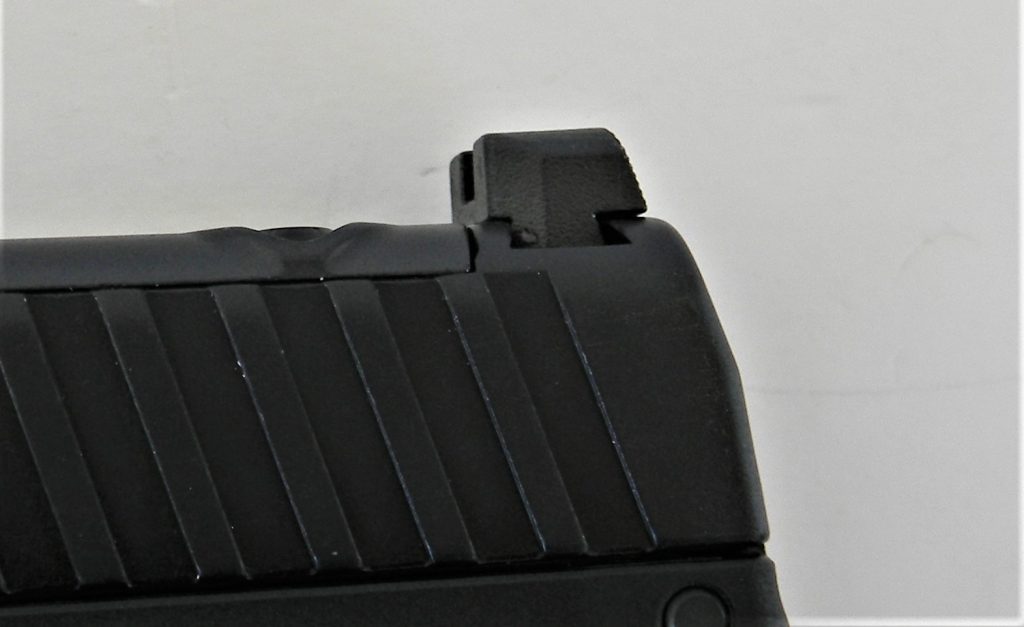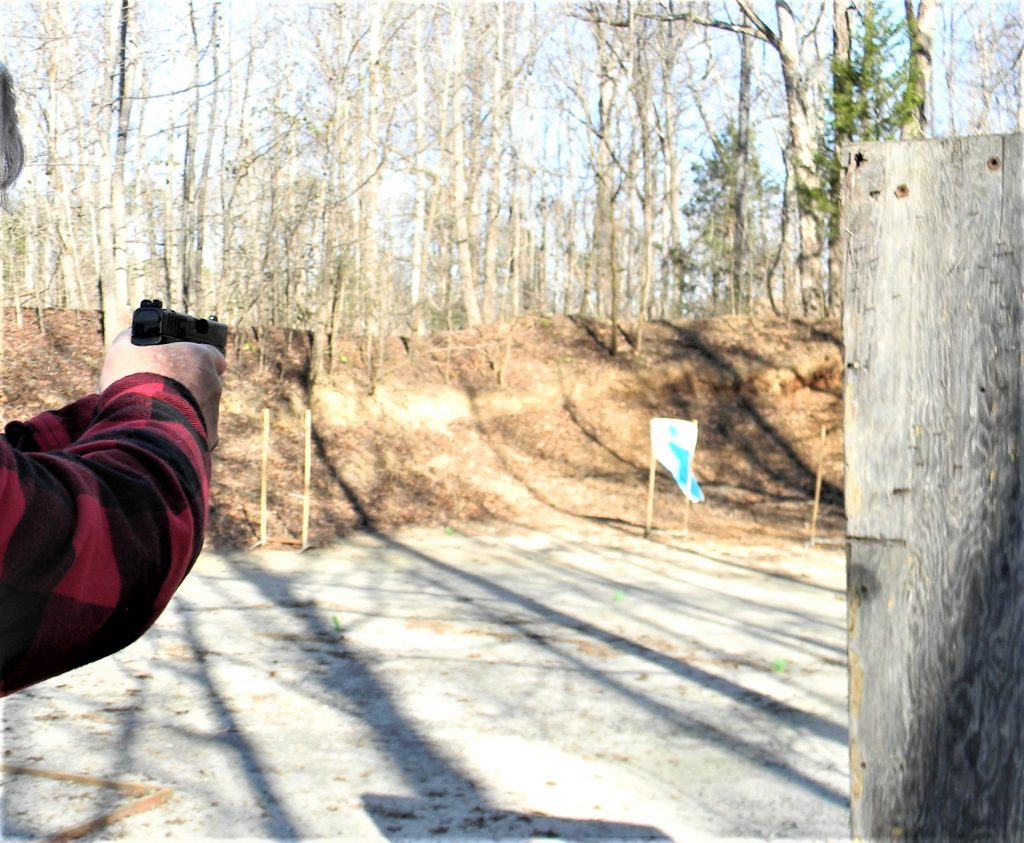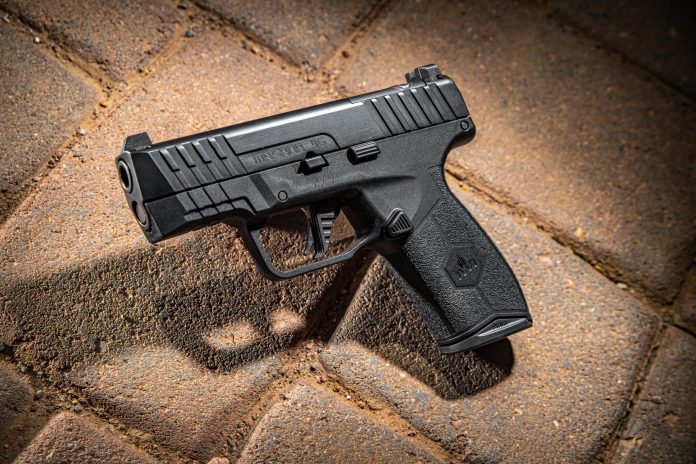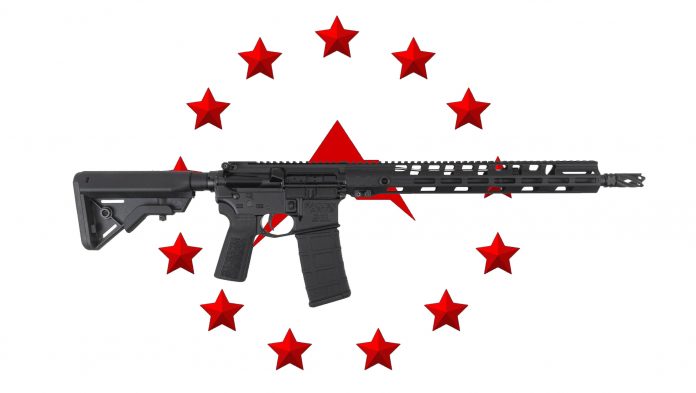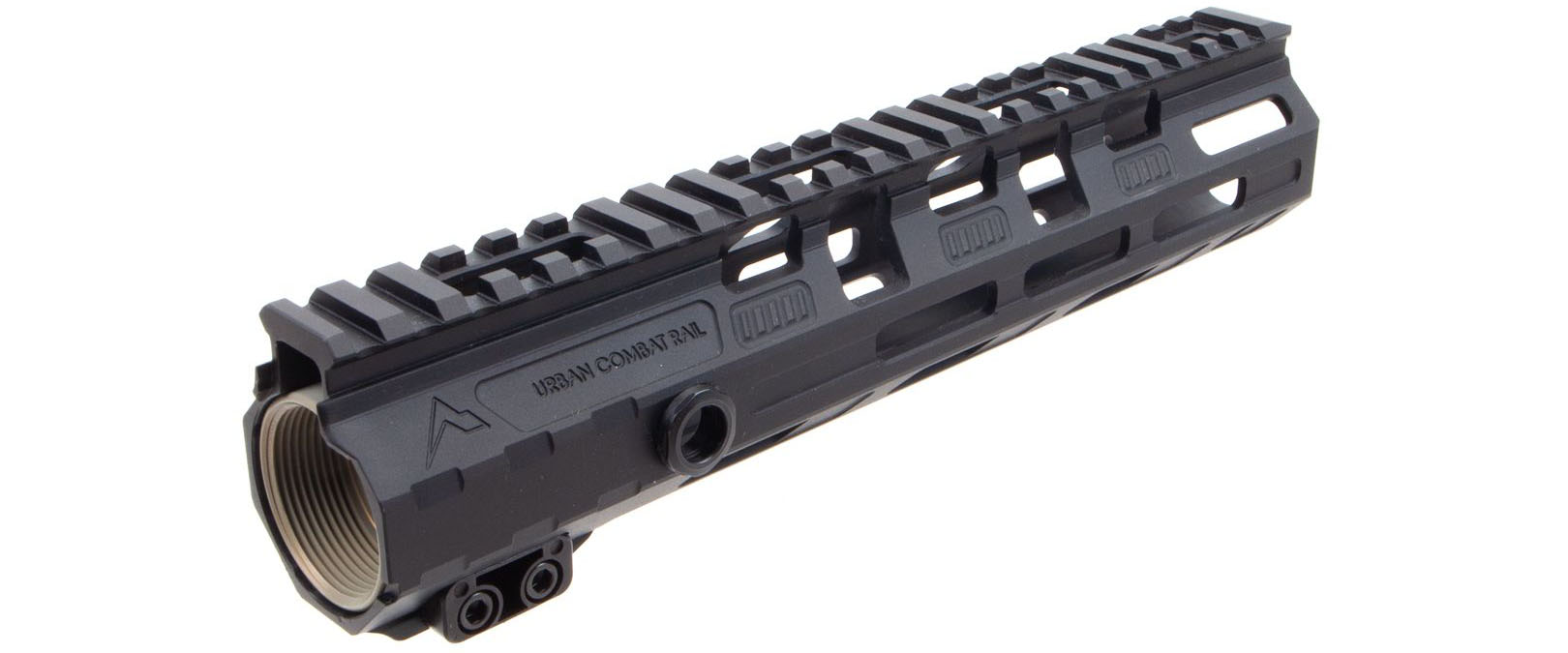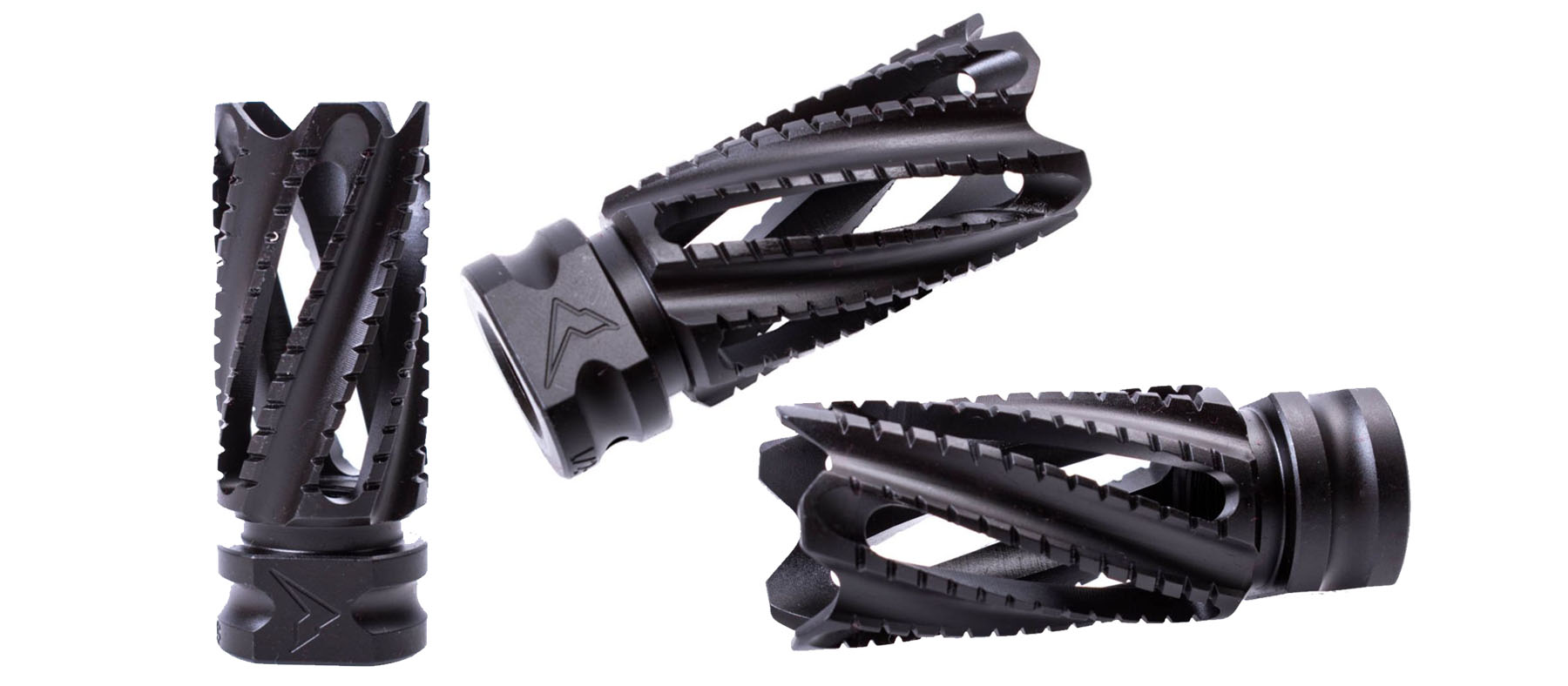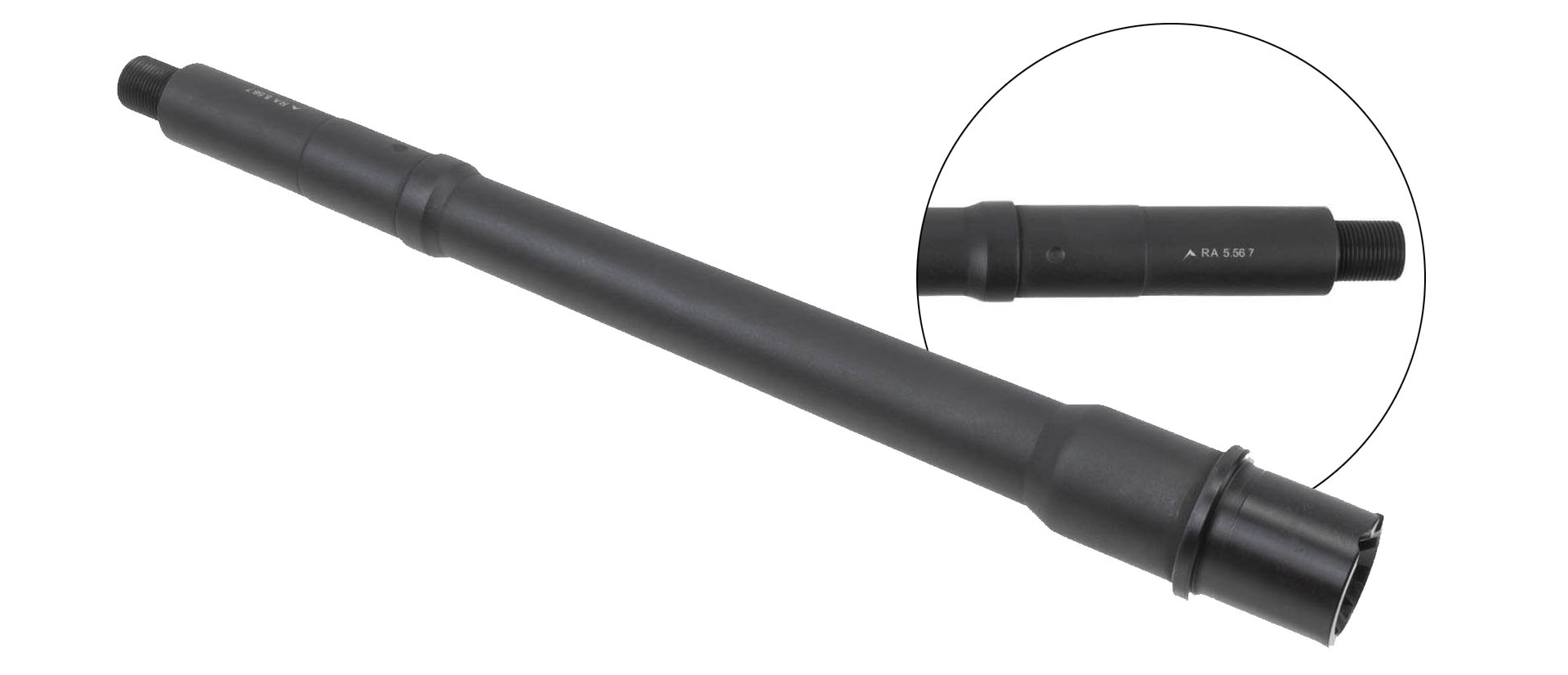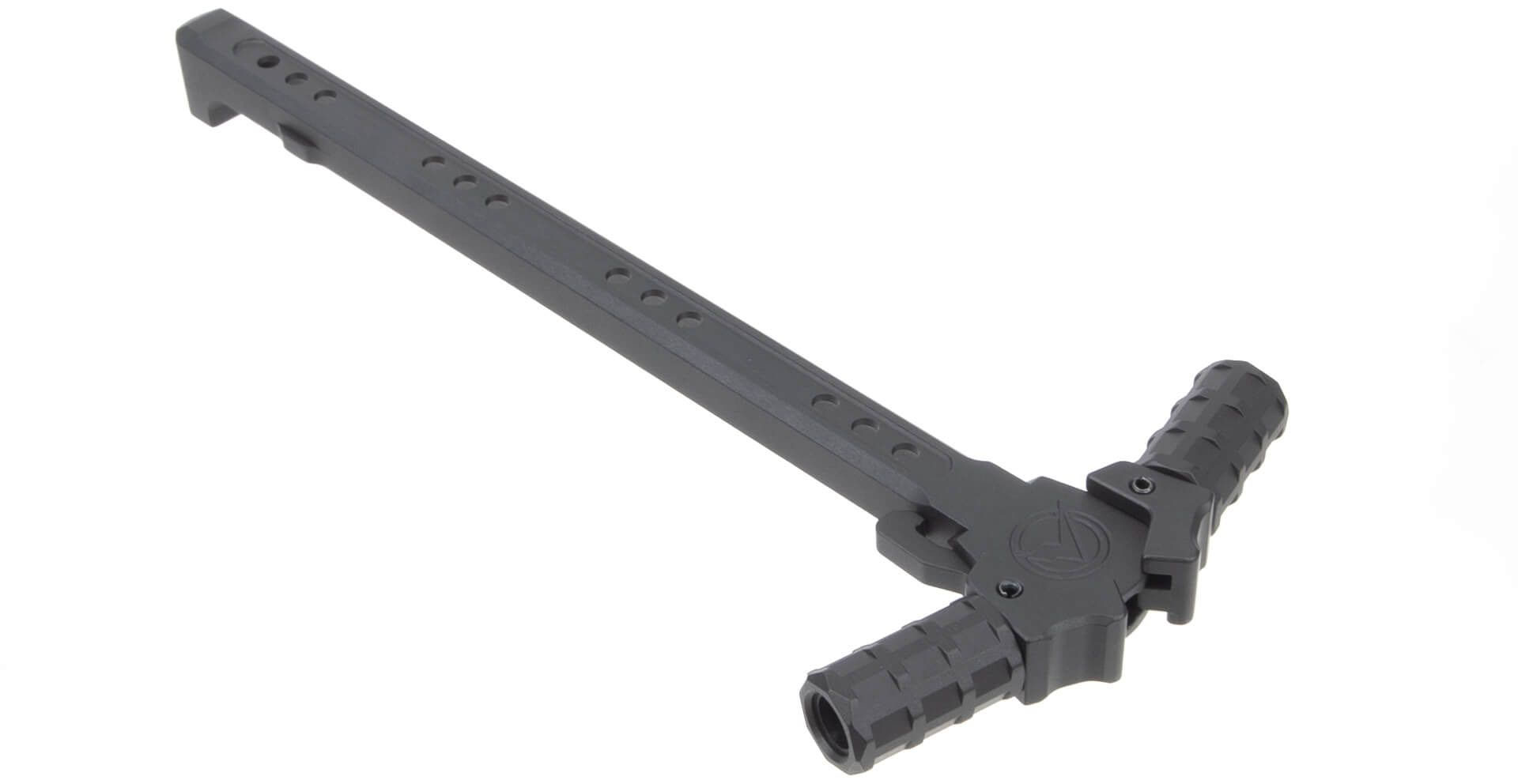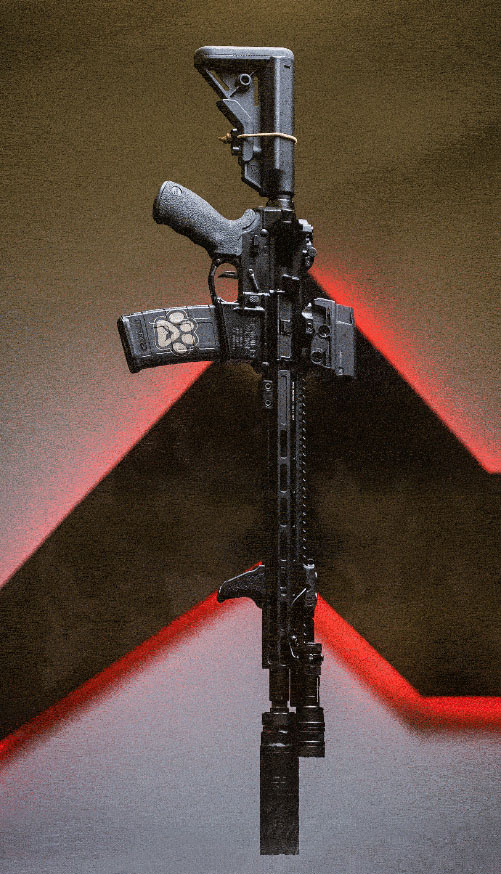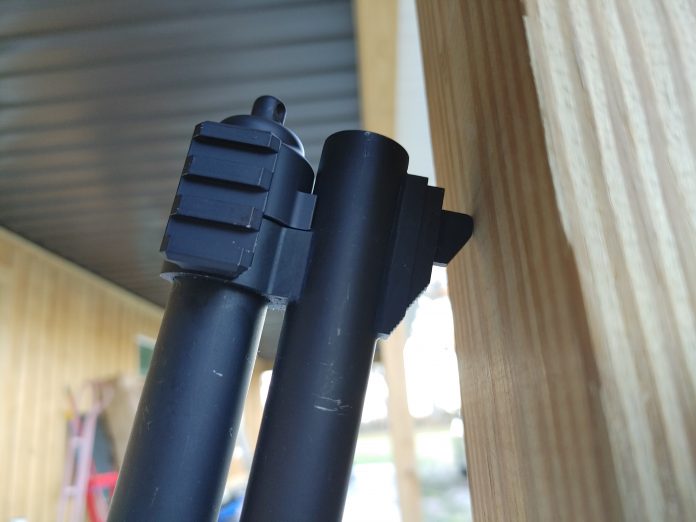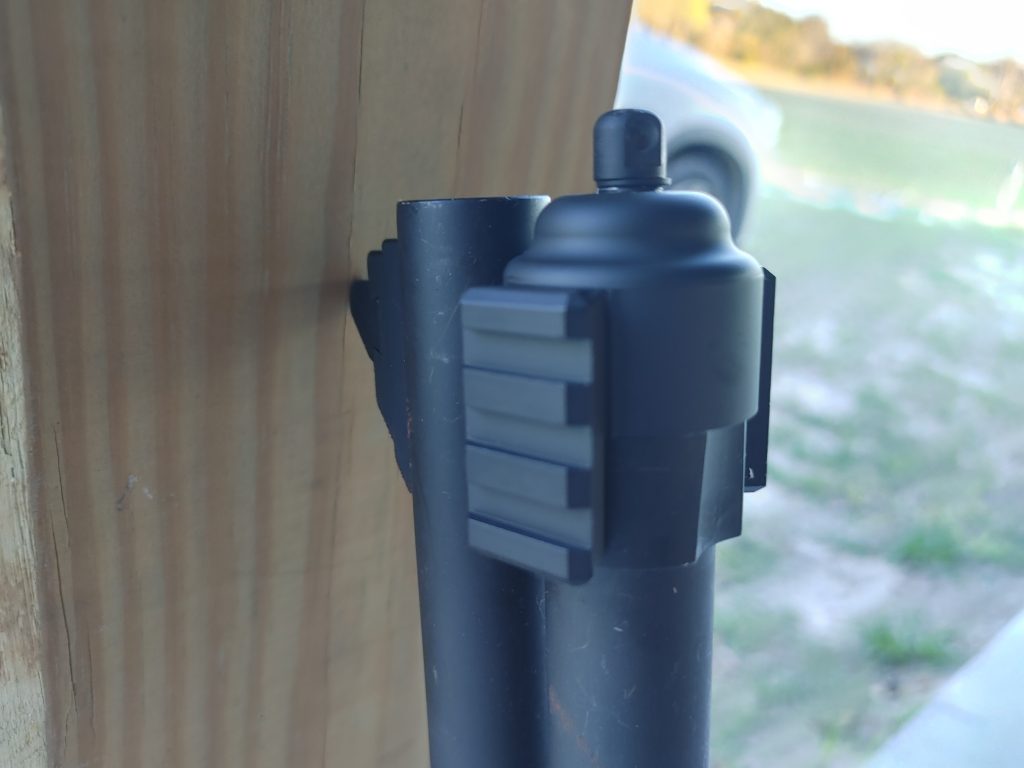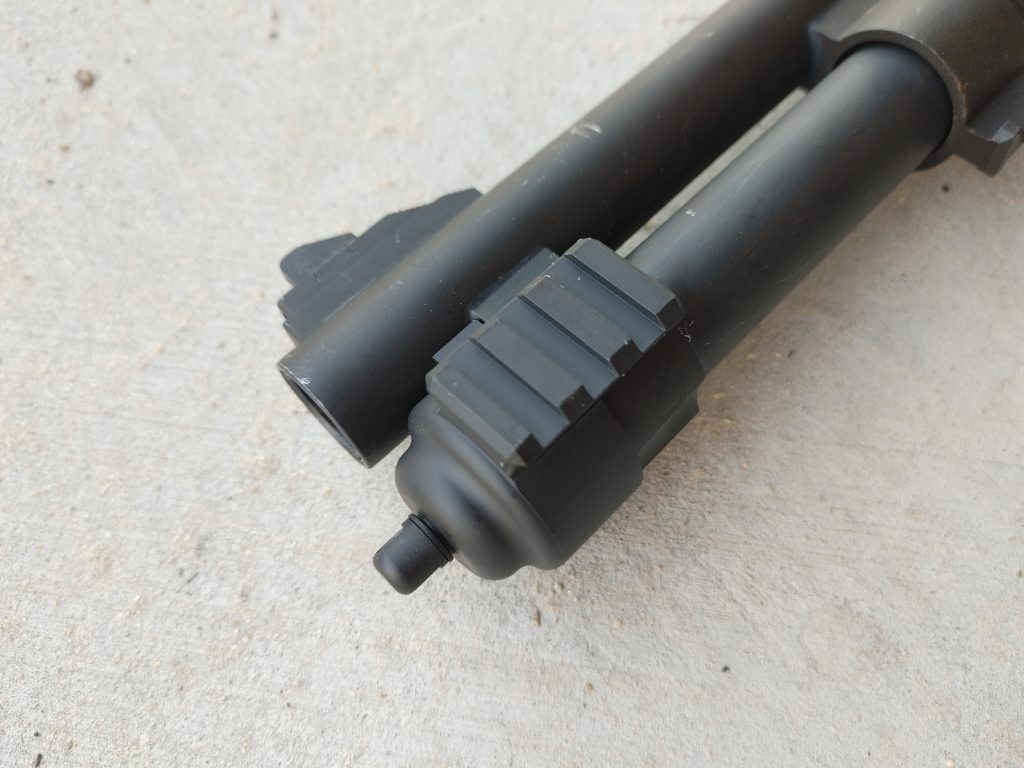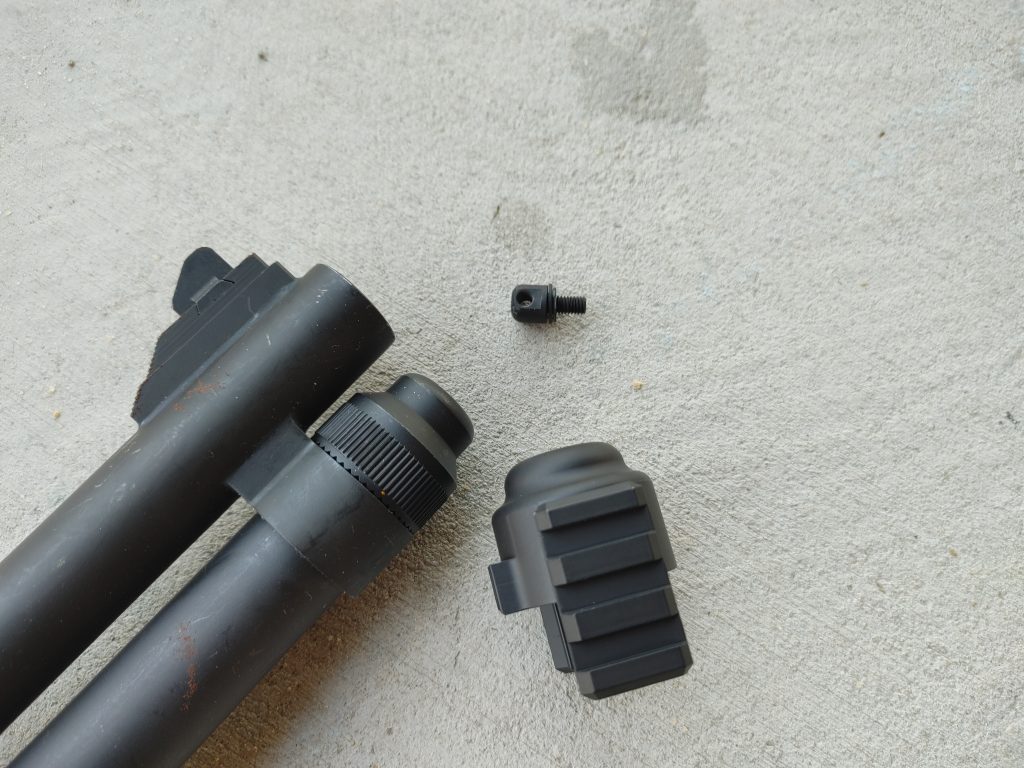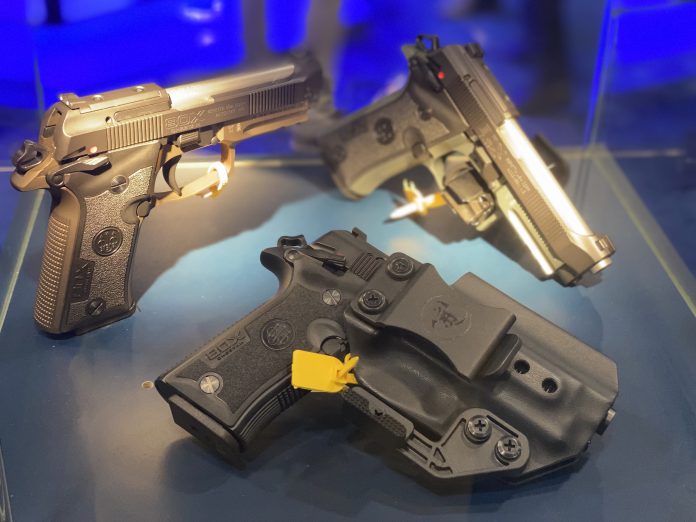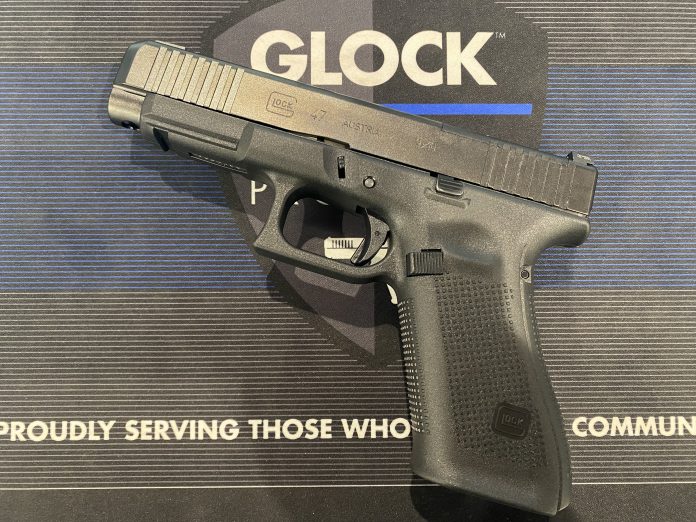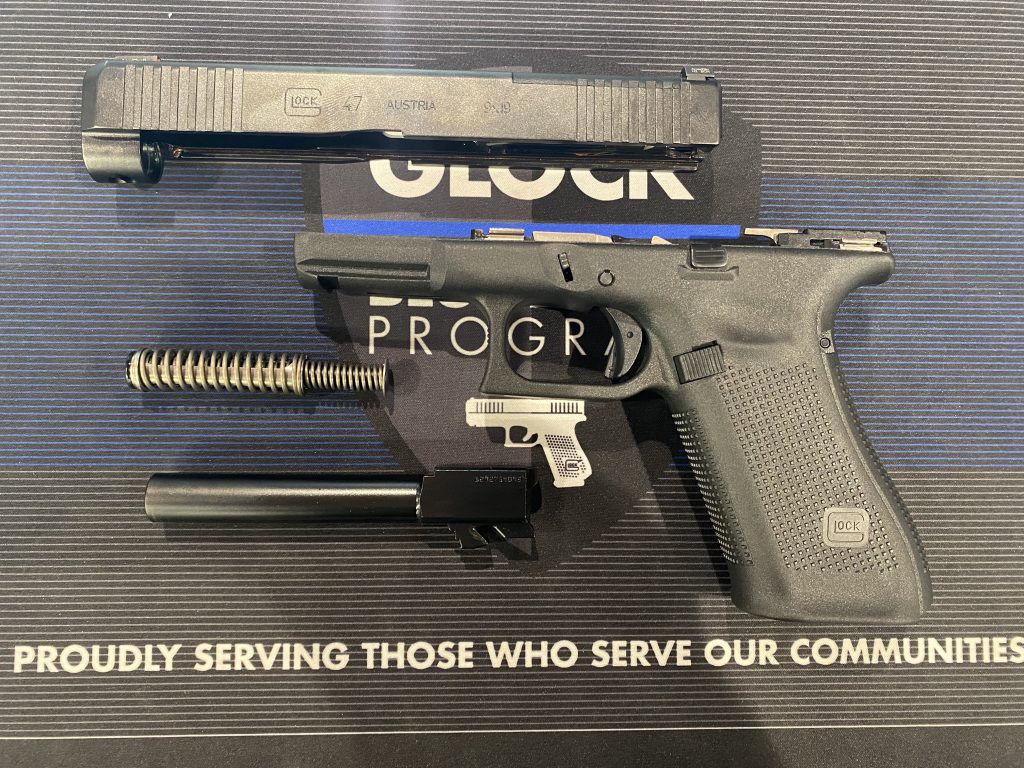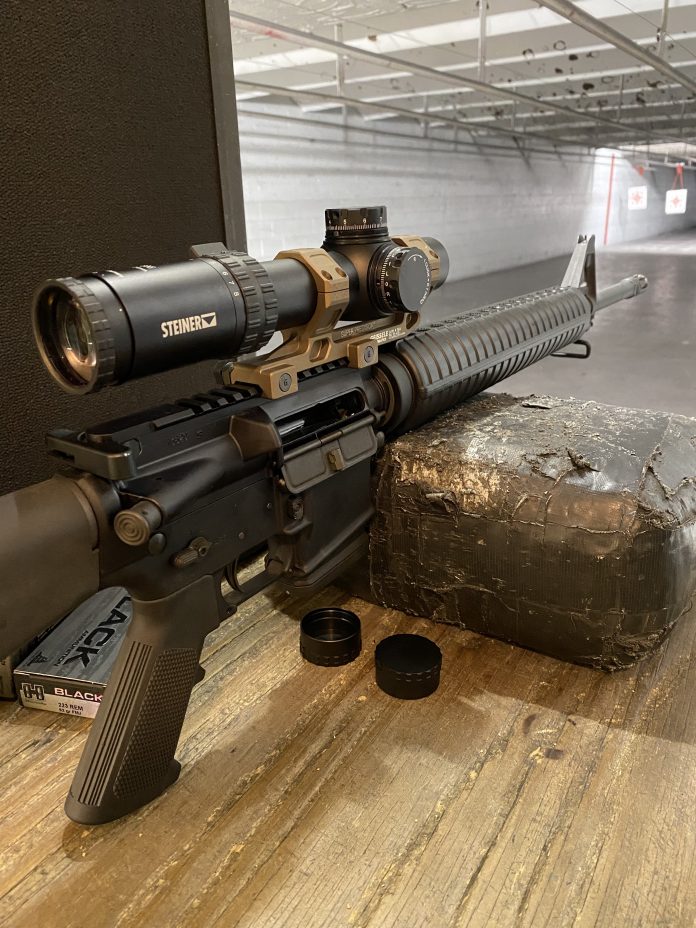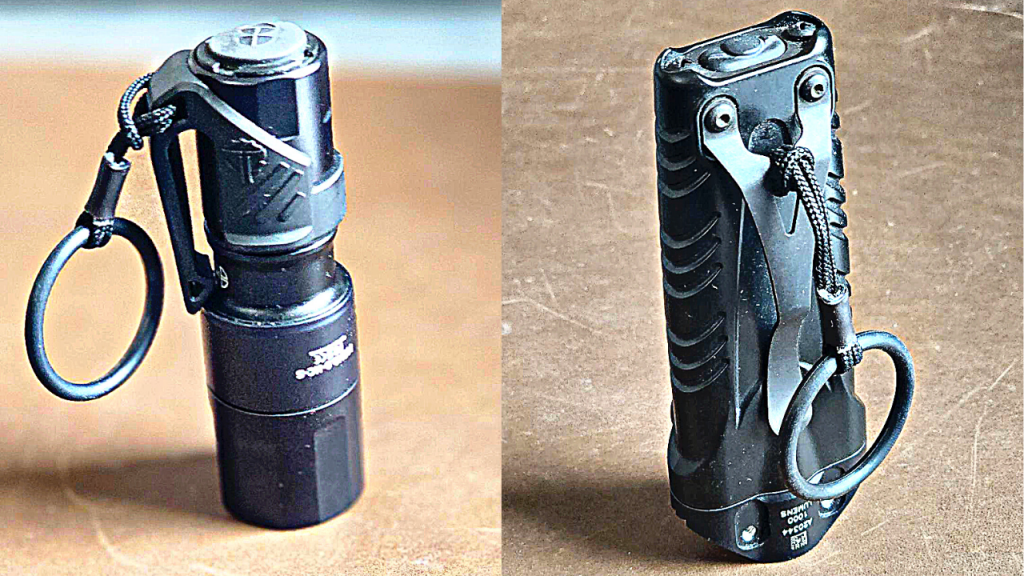Israel is among the most heavily fortified nations. Some governments keep their citizens enslaved, disarmed, and marginalized. The UK is one such nation, and in America many have this goal but it is not yet met save in a few enclaves. Israel has a well armed and free population. Israel Weapon Industries offers good quality firearms including the Jericho, Galil and Tavor. IWI moved into the striker fired polymer frame handgun market a few years ago with the Masada. The Masada is a full size 9mm service pistol. More recently IWI introduced a slim line version of the pistol. This handgun is more compact than the original, skipping the compact designation and earning the popular sub compact designation.
At barely 20 ounces and a with shortened slide, barrel, and grip the slim 9mm is a dedicated concealed carry pistol. All small pistols are a compromise in some shape or form the Masada Slim 9mm offers good performance. The pistol is supplied in a lockable box with two magazines a gun lock and a tool for changing the optics mounting plate. Initial examination shows a pistol that is competently finished with no blemish or tool marks visible. The pistol features a serialized removable trigger assembly. The modular construction is similar to the SIG P320 or Beretta APX. This isn’t that great an advantage as IWI doesn’t yet offer grip modules frames or slides for the Masada. As for quality the IWI company may not have name recognition like SIG or Ruger but those familiar with IWI have great respect for the company. IWI works closely with IMI (Israeli Military Industries) and the Israeli Defense Force. There isn’t room for compromise and unreliable firearms in these application. The main feature of the pistol that gets the most attention is the grip frame. Surprisingly thin the grip features a good balance of adhesion and abrasion. The grip isn’t so grippy that it will snag on clothing but offers plenty of purchase during speed drills. The pistol proved to be fast from the holster and fast on target.

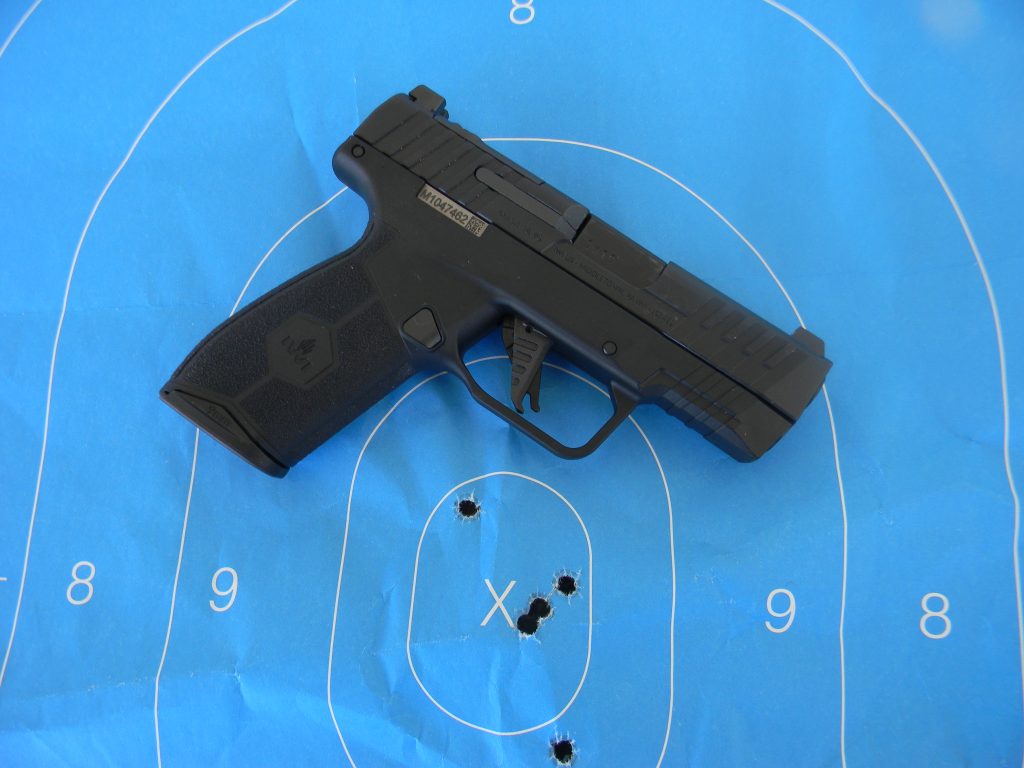
The Masada Slim’s controls including the slide lock, magazine lock and blade type safety set in the trigger face all function properly. The trigger action is crips with a sharp reset. The RCBS trigger pull weight gauge measured a consistent 4.6 pounds with no more than .2 ounce deviation in four pulls. The metal magazines are well constructed and did not need a magazine loader to load to full capacity. The tapered shape of the magazines and wide magazine well make for rapid magazine changes. The take down procedure isn’t a favorite but works well enough. Be certain to study the location and orientation of the take down pin before you field strip the piece. Remove the magazine, lock the slide to the rear and be certain the chamber is empty. Press the take down button forward exposing the take down pin. Remove this pin and allow the slide to run forward. The recoil spring assembly and barrel are easily removed. Not the design of the dual recoil spring assembly. This spring within a spring seems to aid in controlling recoil. Other features I like are the forward cocking serrations and well designed combat sights. The rear sight is a U notch and the front a post.
The pistol was fired without lubrication straight out of the box. Handling is good. The grip is ideally sized for concealment but allows a good grip when firing, more so than a Glock 43X and similar to the SIG P365XL. The pistol’s heft and balance are good. A good natural point allows a trained shooter to get hits quickly and efficiently. Most of the ammunition expended was FMJ type but a number of JHP loads were also tested. Once I decided this would find its way into my carry gun cache I proofed with Federal 124 grain HST, one of my favorite carry loads. The pistol has performed well without any failures to feed, chamber, fire or eject.
Accuracy testing
| Load | Velocity | 5 shot group 15 yards |
| Federal 124 grain HST | 1100 fps | 2.2 in. |
| Federal 124 grain Hydra Shock | 1090 fps | 2.3 in. |
| Federal American Eagle 124 gr. | 1122 fps | 2.5 in. |
This pistol will not replace the full size Masada or a Glock 19X, but it is a good pistol of the size. I cannot say this is the best 9mm pistol in the sub compact field but the Masada Slim 9mm is a good pistol and perhaps the best buy in its class. Average retail seems to run between four hundred and four hundred fifty dollars.
| Model | M9SLIM10, M9SLIM13 |
| Caliber | 9mm Parabellum |
| Action | Semi-auto |
| Operating System | Striker Fired |
| Magazine Type | IWI, Steel |
| Magazine Capacity | 13 Round, 10 Round |
| Barrel Material | Stainless Steel |
| Barrel Length | 3.4″ |
| Weight | 1.27 Lbs without magazine, 1.4 Lbs with magazine |
| Rifling | 1:10 RH |
| Sights | 3 Dot |
| MSRP | $450 |
